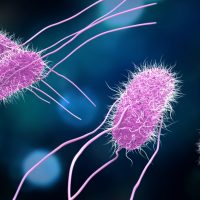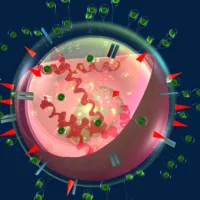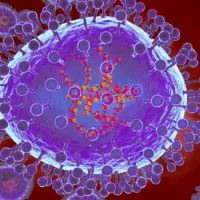
 iStock/ThinkstockBY: DR. TAMBETTA OJONG
iStock/ThinkstockBY: DR. TAMBETTA OJONG
(NEW YORK) — At least 57 people in 16 states have been reported with Salmonella infections after consuming some of the more than 6.5 million pounds of contaminated beef produced by an Arizona company, the U.S. Department of Agriculture’s Food Safety and Inspection Services said.
Over the past few months, several outbreaks of Salmonella have been reported. In September, the Centers for Disease Control and Prevention warned that a multistate outbreak linked to eggs from an Alabama farm was even larger than expected, with 135 people infected across 36 states. As a result, Gravel Ridge Farms in Alabama recalled its cage-free large eggs. In another outbreak, Kellogg’s Honey Smacks was recalled and production of the cereal was stopped.
This is not unusual. Salmonella bacteria are some of the more common causes of food-borne illnesses, commonly called food poisoning. It’s responsible for about 1.2 million illnesses, 23,000 hospitalizations, and 450 deaths in the U.S. each year, according to CDC estimates. Most people infected develop diarrhea, fever and abdominal cramps within six to 48 hours.
Below are some of the answers to common questions about Salmonella infection, also called salmonellosis.
What is Salmonella and is it dangerous?
The name of the bacteria comes from Daniel E. Salmon, an American veterinarian who first isolated Salmonella Choleraesuis from pigs in 1884. It is one of the causes of food-borne illness more colloquially known as food poisoning. Most often, the infection results in illness, but it can require hospitalization or even lead to death.
How is Salmonella infection spread?
Salmonella infections usually begin with consumption of contaminated foods. Most common sources include beef, poultry and eggs. However, improperly prepared fruits, vegetables, dairy products and shellfish have also been implicated as sources of Salmonella.
How can Salmonella infection be avoided?
According to the CDC, there are four quick steps that can help keep people safe from food poisoning at home: “clean, separate, cook and chill.” Washing hands and surfaces often and rinsing fresh fruits and vegetables under running water helps. Using separate cutting boards for different foods can help prevent cross-contamination from one food to another.
Placing foods that are more prone to carry Salmonella bacteria, like raw meat, poultry and seafood, in separate drawers or spaces in the fridge can also help.
Cook foods to the correct, recommended temperatures, as well. Use a food thermometer to check that the internal temperature of the cooked food is high enough to kill germs.
The last step is refrigerating food promptly, ensuring that the fridge temperature is below 40 degrees Fahrenheit and knowing when to throw food out.
What are the symptoms of Salmonella infection?
Signs that a Salmonella infection is present will usually begin six to 48 hours after ingesting a contaminated food. People who are infected will often report abdominal cramps, diarrhea, fever, vomiting and even bloody stool.
When to seek medical help
If more severe symptoms are present, a trip to the doctor is recommended, including severe stomach pain or cramping, inability to eat or drink or the presence of blood in vomit or bowel movements.
A fever higher than 100.4 degrees Fahrenheit for more than two or three days also warrants medical attention.
Is there a test for Salmonella infection?
Yes, but not everyone needs to be tested. If symptoms are not severe, there is little need for a test. Some people are at higher risk of becoming seriously ill from Salmonella infection, including those with weak immune systems, babies under 1 year old and adults older than 50.
Results of Salmonella test can take two or three days to be returned, so doctors may prescribe antibiotics right away if an infection is suspected.
What is the treatment?
Most patients with Salmonella are monitored carefully and told to drink lots of fluids first, before antibiotics are used. The drugs are reserved only for those who become very ill with severe diarrhea, high fever or some signs of systemic illness.
Dr. Tambetta Ojong is a family medicine resident at SUNY Downstate Medical Center and a part of the ABC News Medical Unit.
Copyright © 2018, ABC Radio. All rights reserved.















